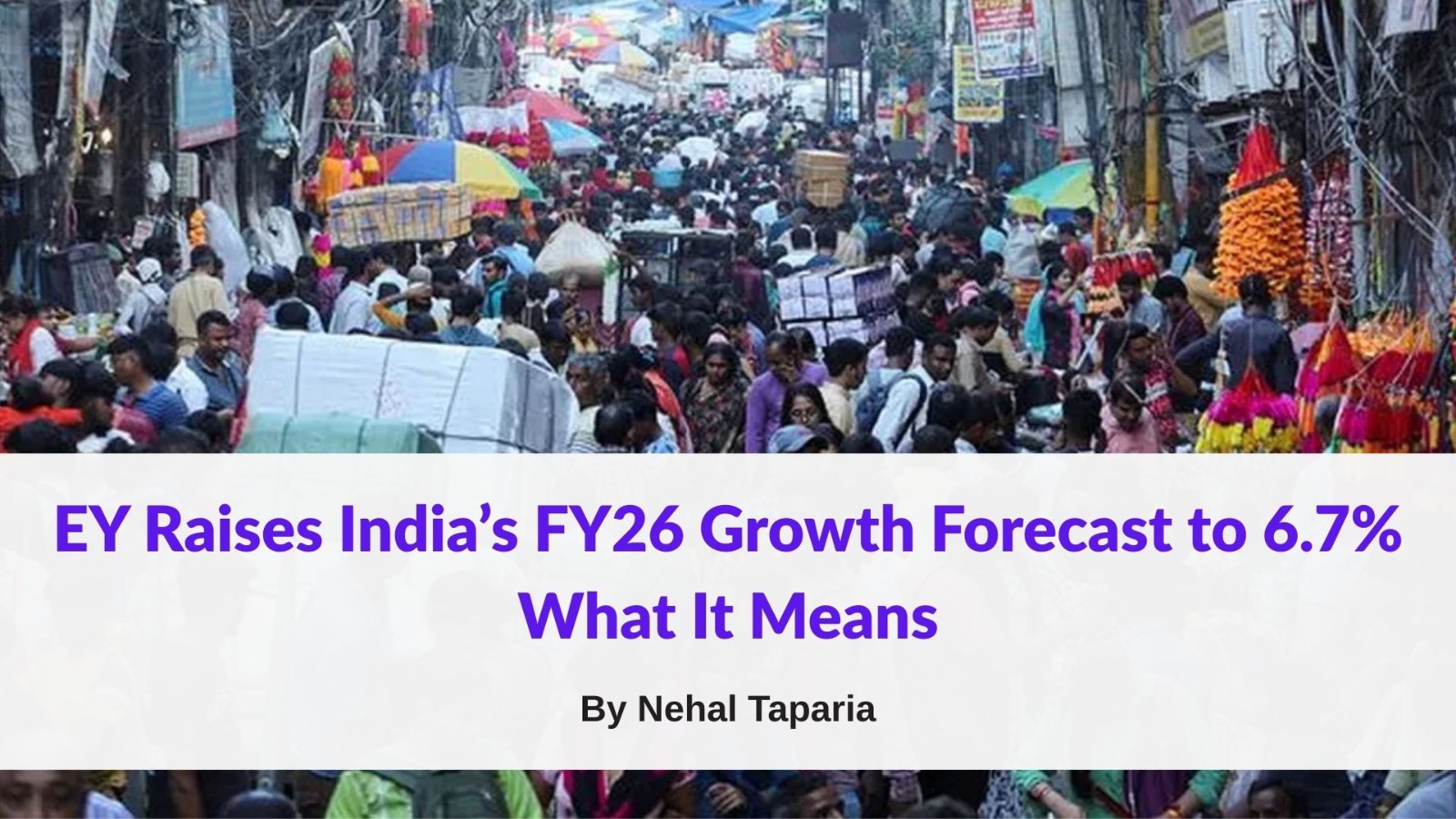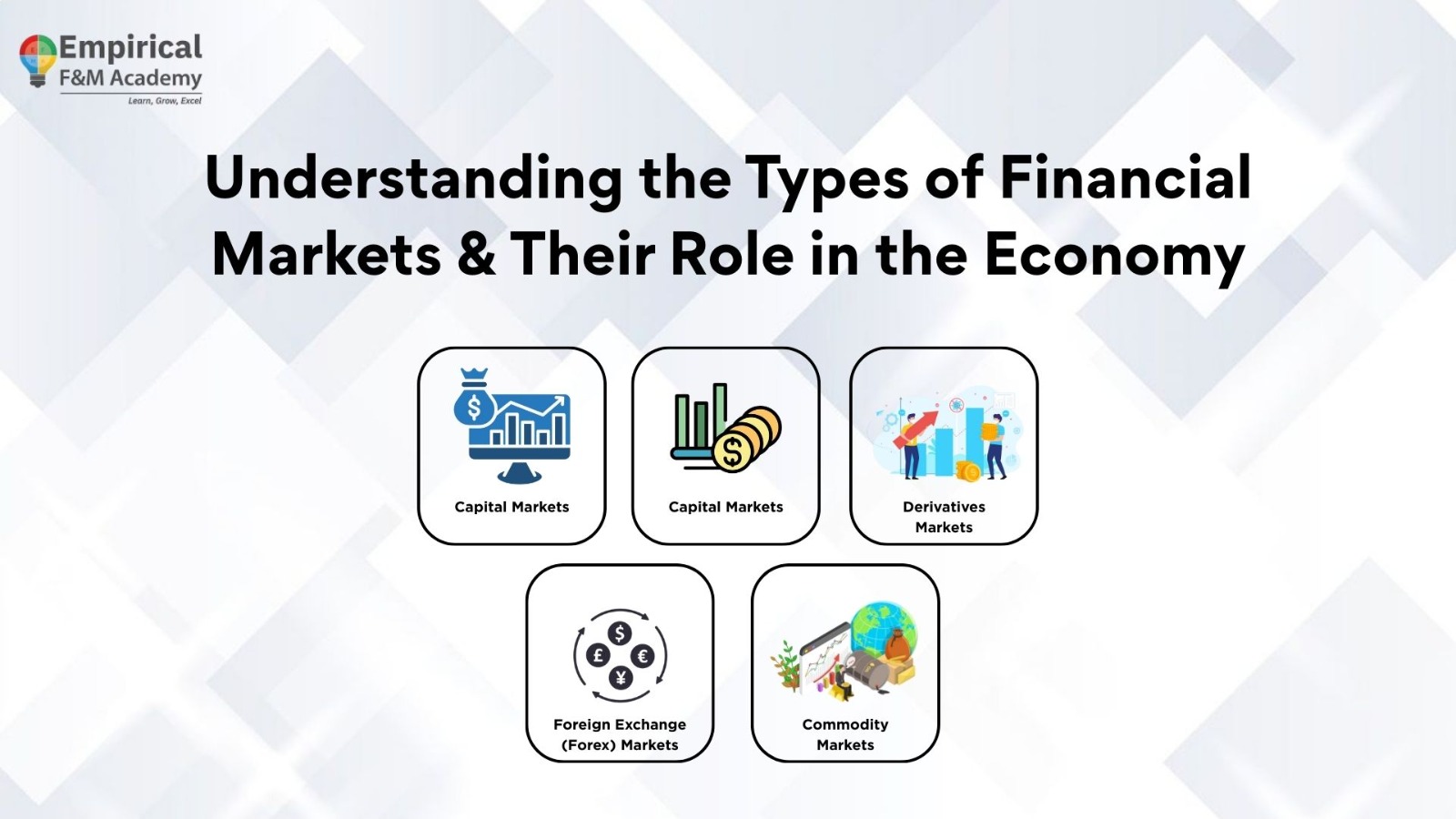EY Raises India’s FY26 Growth Forecast to 6.7% — What It Means

EY Raises India’s FY26 Growth Forecast to 6.7% — What It Means
What Happened?
- EY has revised India’s expected real GDP growth for FY26 upward from 6.5 % to 6.7 %, citing the boost from the new GST 2.0 reforms.
- According to their Economy Watch report, the faster growth projection is supported by stronger indirect tax collections, increased government spending (especially capital expenditure), and structural reforms.
- In the first quarter of FY26, India posted a robust 7.8 % growth, exceeding expectations, which provides momentum going forward.
- The rollout of the GST 2.0, which simplified slabs and lowered rates on many items, is expected to stimulate consumption, ease inflation pressures, and strengthen domestic demand.
How Will This Affect Indian Markets?
Here’s a breakdown of possible effects across sectors and financial markets:
|
Area |
Potential Impact |
|
Equity Markets / Sentiment |
Positive. Higher growth expectations tend to boost investor confidence. More inflows from domestic and foreign investors could follow. |
|
Consumption / Consumer Goods |
Upgrades in demand for discretionary goods (apparel, consumer durables, QSRs) as GST cuts lower retail prices. |
|
Retail & E-commerce |
Likely gains, especially for brands that rely on consumer discretionary spending. Lower GST rates on many items make products more affordable. |
|
Banking & Financials |
Improved credit growth on greater economic activity; higher business & consumer borrowing. However, pressure on net interest margins if interest rates fall. |
|
Infrastructure / Capital Goods |
Likely to benefit as government ramps up capital expenditure. With a higher growth trajectory, more projects may be launched or accelerated. |
|
Real Estate / Housing |
May get a boost from increased affordability, more job creation, and improved consumer sentiment. |
|
Exports / Trade-related sectors |
More mixed. Global headwinds and trade/tariff pressures remain risks. If external demand weakens, export-oriented sectors may underperform. |
|
Bond Markets / Yields |
With better growth, yields may rise — unless inflation pressures or policy changes push bonds. But if growth is supported by stable macro policies, yields might stay well behaved. |
|
Currency / Rupee |
Stronger growth plus inflows may support the rupee. However, external factors (e.g. U.S. interest rates, global risk) will also matter. |
Takeaway
EY’s upward revision to 6.7 % for FY26 is a vote of confidence in India’s reform agenda — especially the new GST structure — and the momentum seen in Q1.
If this growth materializes, it could fuel consumption, improve corporate earnings, and attract more capital into Indian markets.
But this is not without risks — global headwinds, inflation, trade pressures — which investors must watch carefully.
By Nehal Taparia
This content is for educational and knowledge purposes only and should not be considered as investment or Trading advice. Please consult a certified financial advisor before making any investment or Trading decisions.
Our Recent FAQS
Frequently Asked Question &
Answers Here
Q1: Why did EY increase India’s FY26 growth forecast?
Because of structural tax reforms (GST 2.0) which are expected to lower costs, increase consumption, improve tax compliance, and stimulate the economy. Also, the strong 7.8% growth in Q1FY26 gave confidence to upward revision.
Q2: What is GST 2.0 and why is it significant?
The 2025 GST reform simplified slabs (e.g. removing 12%, 28% slabs) and lowered rates on many goods and services. This helps reduce prices for consumers, boost demand, and increase indirect tax revenues.
Q3: Is 6.7% growth guarantee or just a projection?
It’s a forecast based on current data and assumptions. It’s subject to risks such as global slowdown, trade issues, policy missteps, inflation, etc.
Q4: What are the key risks to this growth outlook?
• External demand slowdown or trade wars
• Inflationary pressures, especially in food & energy
• Policy misalignment or delays in reforms
• Fiscal constraints limiting further stimulus
• Fluctuations in global interest rates that impact capital flows
Q5: What should investors / businesses do in light of this?
• Tilt portfolios toward sectors likely to benefit (consumer, infra, financials)
• Monitor macro data & policy announcements closely
• Avoid overexposure to high leverage / vulnerable sectors
• Keep liquidity handy, use hedges if needed
• Focus on companies with strong balance sheets and good earnings visibility
Copyright © By Empirical F&M Academy. Design & Developed by Techno Duniya

.jpeg)
.jpeg)
.jpeg)

.jpeg)




